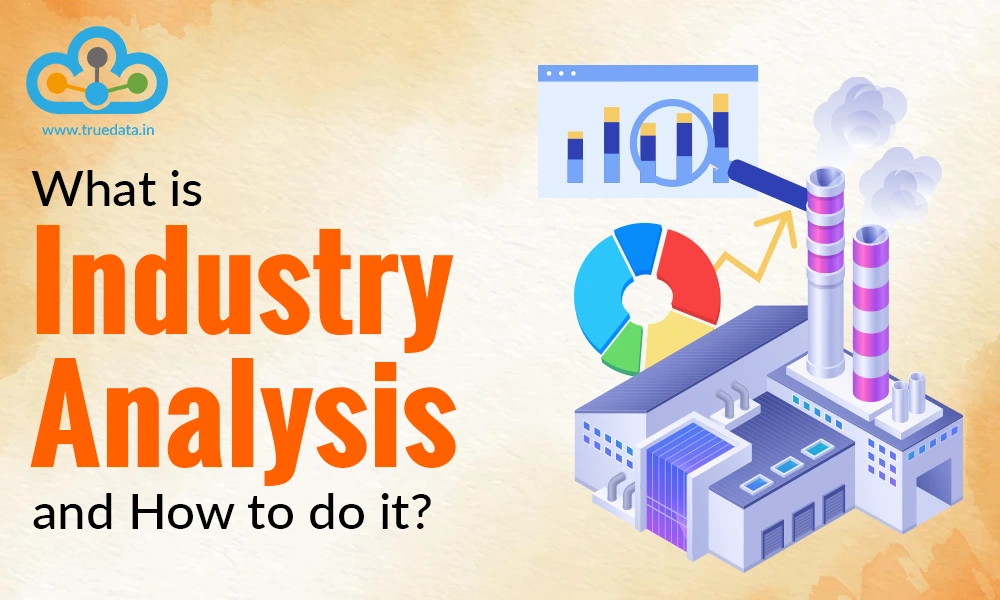
When we talk about fundamental analysis of stocks, it primarily involves analysing the company data, its competitors, the industry that it belongs to, the macro and micro factors affecting the business and so on. While there are two approaches to this task, namely the top-down and the bottom-up approach, both are incomplete without the overall industry analysis. But why is industry analysis an important aspect in evaluating stocks, and how does it help? Get answers to these questions and more in this blog post to make informed investment decisions.
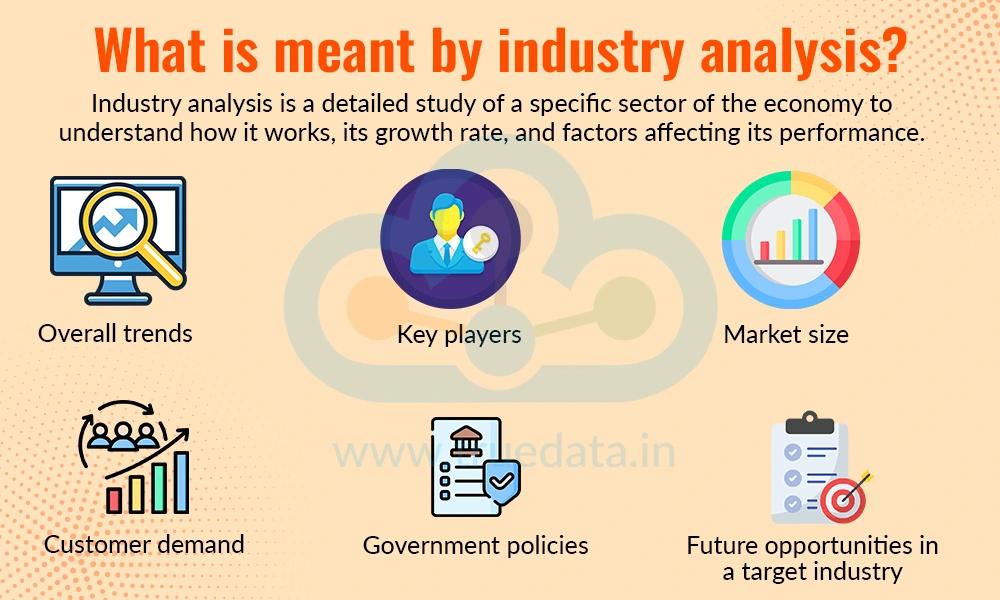
Industry analysis is a detailed study of a specific sector of the economy to understand how it works, its growth rate, and factors affecting its performance. This involves looking closely at the overall trends, key players, market size, customer demand, government policies, and future opportunities in a target industry, like IT, pharmaceuticals, or renewable energy. Industry analysis helps investors make smarter decisions about where to invest their money. It can help them identify which industries are likely to grow, which ones are facing challenges. Furthermore, it can also help break down an understanding of how external factors like inflation, global demand, or new technology might impact that sector. This kind of analysis reduces risk and increases the chances of getting good returns on investment.

As mentioned above, industry analysis is a vital part of the fundamental analysis of stocks. The importance of the process of industry analysis is thus explained below.
Industry analysis helps investors understand how a specific sector is performing in the market.
It shows whether the industry is growing, shrinking, or staying the same, which helps in making better investment decisions.
Investors can better understand the risks and challenges that an industry may face in the future.
It gives information about the major companies in the industry and the strength of the competition in the industry.
It helps investors choose industries with good future potential and avoid those with weak or declining prospects.
Industry analysis can provide insight into how government policies, economic conditions, or global events can affect the industry.
It helps avoid losses by warning about industries that may be too seasonal, risky or unstable.
It allows investors to compare different industries and pick the best option based on their goals and comfort level.
It helps in building a strong investment plan by focusing on sectors with long-term growth, thereby increasing the chances of earning better returns by investing in well-performing industries.

There are various aspects to analysing an industry to understand its strengths and weaknesses and potential investment opportunities. Some of the broad aspects to be covered under industry analysis are explained below.
This part gives a general idea about the industry. It includes what the industry does, what products or services it offers, and how it fits into the larger economy. For example, if you are looking at the Indian automobile industry, the overview will explain what types of vehicles are made, how many companies are in the market, and who the main customers are. This helps investors understand the basic structure of the industry.
This tells how big the industry is and how fast it is growing. A large and growing market usually means more chances to make profits. For example, the renewable energy sector in India is growing quickly due to demand for clean energy. Investors use this information to find industries with strong future potential.
This shows what changes or improvements are happening in the industry. Trends can include things like new technology, changes in customer behaviour, or shifts toward online services. For example, in the retail industry, the move from offline shopping to e-commerce is a major trend in India. Keeping up with trends helps investors stay ahead.
This looks at how many companies are operating in the industry and how strong the competition is. If there are too many players, profits may be lower. If only a few big companies control the market, they may have more pricing power. Understanding the level of competition helps investors know how easy or hard it is for a company to grow in that sector.
Government rules can help or hurt an industry. For example, tax benefits and subsidies help the solar energy sector grow, while high taxes may reduce profits in another sector. Investors need to check what policies the government has in place for the industry they are interested in.
This means how easy or hard it is for a new company to start in the industry. High barriers like large startup costs or strict licenses can protect existing companies from too much competition. Investors should know whether the industry is open to new companies or is hard to enter.
Understanding what customers want is very important. If demand is high and customer interest is strong, the industry has good chances for growth. For example, there is a rising demand for electric vehicles in India, which means the EV industry could be a good investment. Investors should look at customer habits and buying power to make better decisions.
Many industries depend on raw materials and smooth supply chains. For example, the construction industry relies on materials like cement, steel, and sand. If raw materials become costly or hard to get, it can affect profits. Investors should understand the supply system of the industry before investing.
Some Indian industries are affected by global markets, like IT services or pharmaceuticals. If there is strong global demand, these industries can grow faster. An investor should check whether the industry depends mostly on the market or if it also earns money from exports.
This shows how much money companies in the industry are making. Investors should look at profit margins, costs, and growth in sales. Strong financial performance means the industry is healthy and may be a good place to invest.
There are various models that have been tried and tested over the years to enable users to undertake industry analysis in a structured and simplified manner. These popular model and their brief understanding is highlighted below.
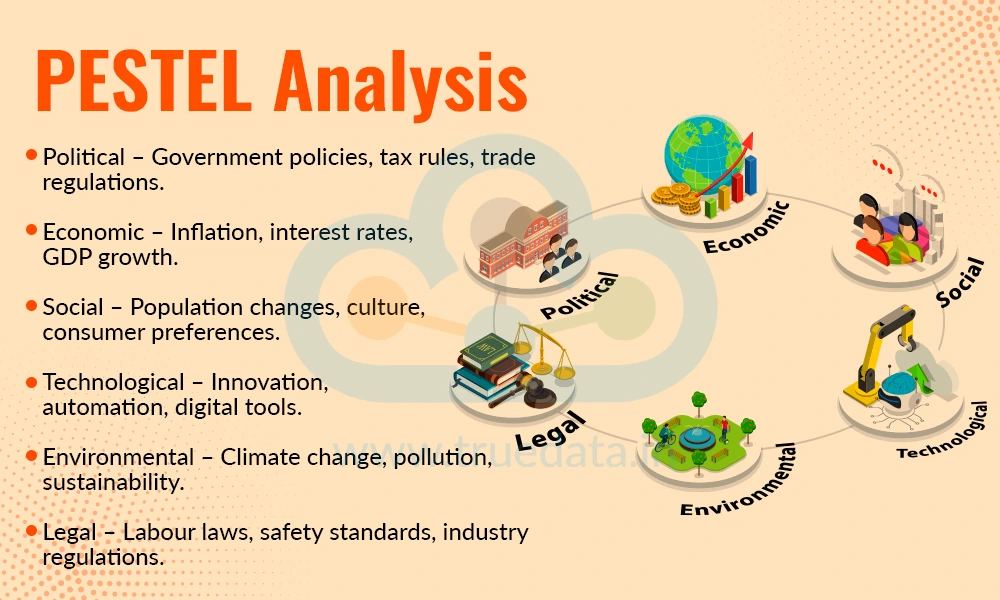
PESTEL stands for Political, Economic, Social, Technological, Environmental, and Legal factors. This method helps investors look at all the outside influences that can affect an industry.
Here is a breakdown of the same.
Political factors include government policies, tax rules, and trade regulations.
Economic factors include inflation, interest rates, and GDP growth.
Social factors involve changes in population, culture, and consumer preferences.
Technological factors look at innovation, automation, and the use of digital tools.
Environmental factors deal with climate change, pollution, and sustainability.
Legal factors involve labour laws, safety standards, and industry regulations.
For example, in the Indian electric vehicle (EV) industry, government subsidies (political), rising fuel prices (economic), and environmental concerns all play a major role.
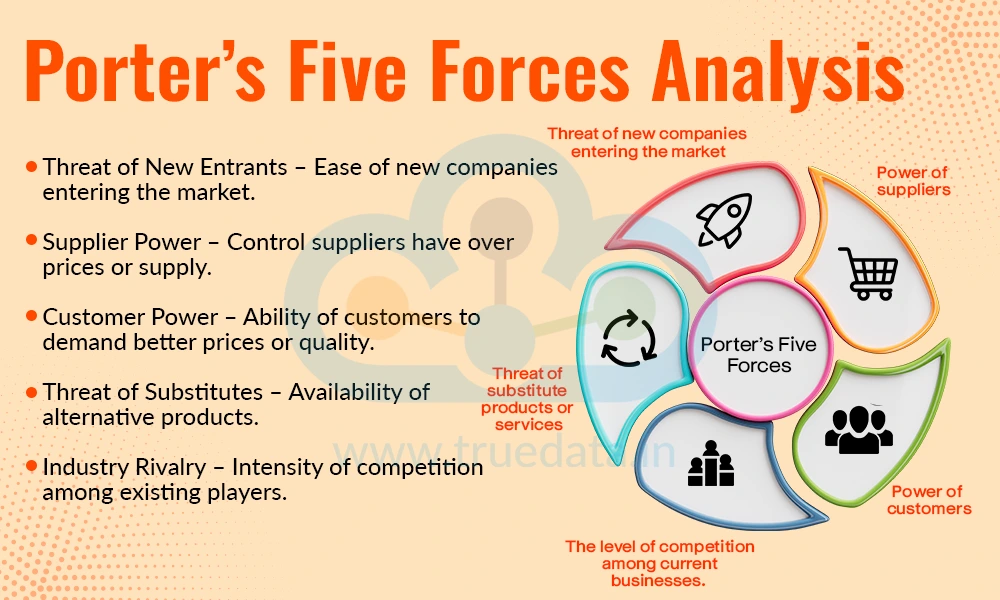
We have covered a detailed explanation of Porter’s Five Forces Model in our previous blog post. This model can be used to evaluate an industry and the competition within it to derive useful insights. This method looks at five important forces that shape competition in an industry.
Threat of new entrants - Can new companies easily enter the industry?
Bargaining power of suppliers - Do suppliers have control over prices or supply?
Bargaining power of customers - Can customers demand better prices or quality?
Threat of substitutes - Are there other products that can replace what the industry offers?
Industry rivalry - How intense is the competition between existing companies?
This method helps investors understand how competitive and profitable the industry can be.
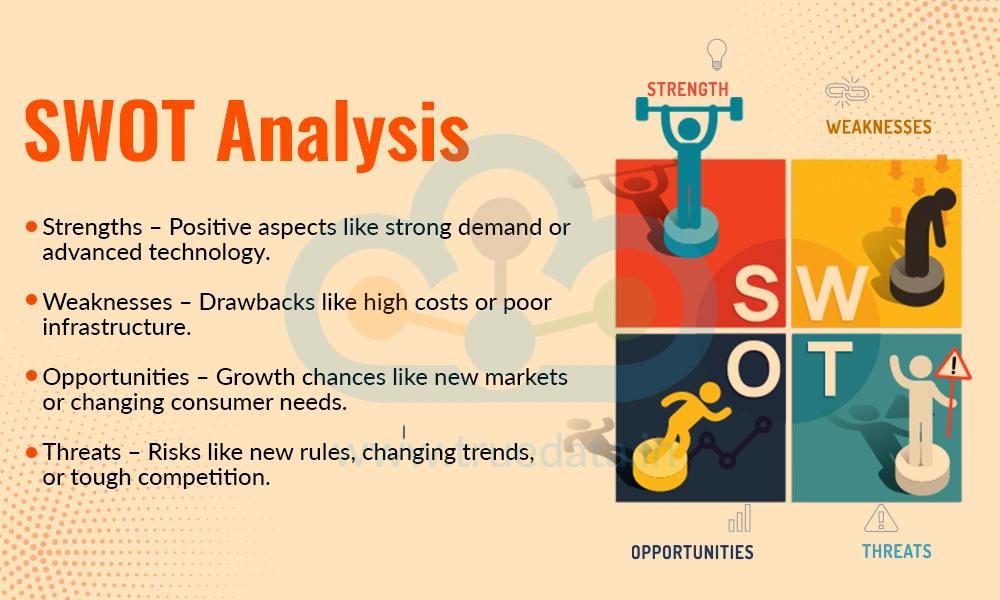
SWOT stands for Strengths, Weaknesses, Opportunities, and Threats in an industry. This method helps in understanding the internal and external factors affecting an industry and its overall performance, as well as that of the companies within the industry.
Strengths are the positive things the industry is known for, like strong demand or advanced technology.
Weaknesses are the drawbacks, like high costs or poor infrastructure, that can affect the performance of companies within the industry
Opportunities are chances for growth, such as new markets or changing consumer needs.
Threats are dangers like new rules, changing trends, or tough competition that affect the industry.
For example, the Indian pharma industry has the strength of low-cost production and the opportunity to export globally, but it faces threats from global regulations.
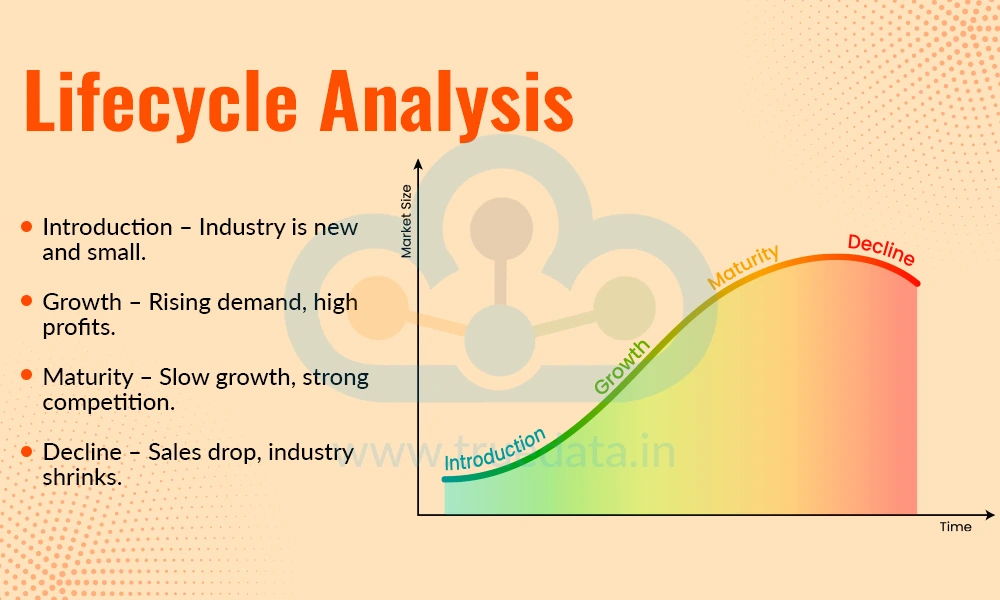
Every industry goes through four basic stages, namely, Introduction, Growth, Maturity, and Decline. This method helps investors know which stage the industry is currently in.
In the introduction stage, the industry is new and small.
The growth stage reflects rising demand, and companies are making good profits.
The maturity stage shows slow growth, and competition becomes strong.
In the decline stage, sales drop and the industry may shrink.
Knowing the industry’s stage helps investors plan when to enter or exit. For example, the Indian EV sector is in the growth stage, while the print newspaper industry is in decline.
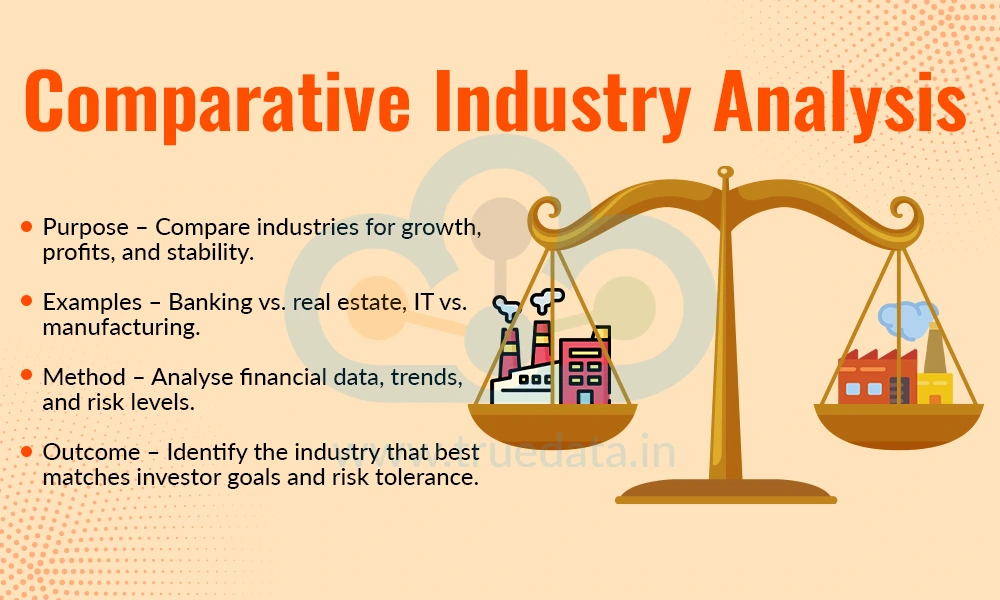
This method compares one industry with another to find out which one has better growth, profits, and stability. Investors may compare diverse industries or sectors like banking vs. real estate or IT vs. manufacturing to decide where to invest. This is done by analysing the financial data, trends, and risk levels, etc., thus helping investors choose the industry that fits their goals and risk tolerance better.
Industry analysis provides a deep understanding of the industry that the company belong to, thereby helping investors make informed investment decisions. However, it is a tedious process and requires a clear understanding of the financial data. The pros and cons of undertaking industry analysis are highlighted below.
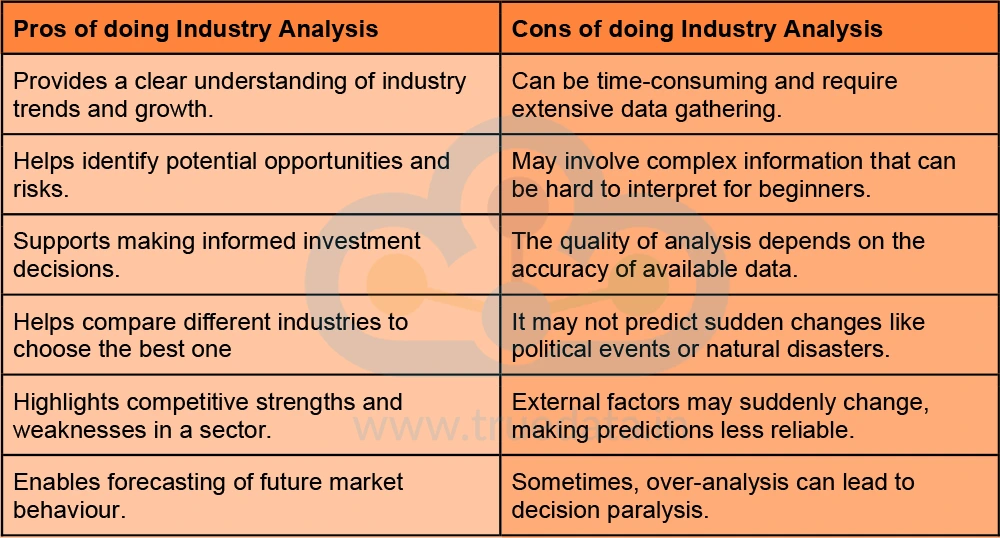
Industry analysis is a useful tool that helps investors in India make better investment decisions by understanding how a sector works, its growth potential, and the risks involved. It includes a study of various parameters affecting industry performance and aims to gain a clear picture of the industry’s current and future situation. While it takes time and effort, industry analysis reduces risk, supports smart planning, and increases the chances of earning good returns.
This article talks about a crucial step in the fundamental analysis of stocks. Let us know your thoughts on this topic or if you need further information on the same, and we will address it.
Till then, Happy Reading!
Read More: How Realtime Corporate Announcements Can Enhance Transparency and Trust in Organisations?

Thestock market never stands still, and prices swing constantly with every new h...

Imagine a business without any competition. What's the outcome? An unchecked mon...
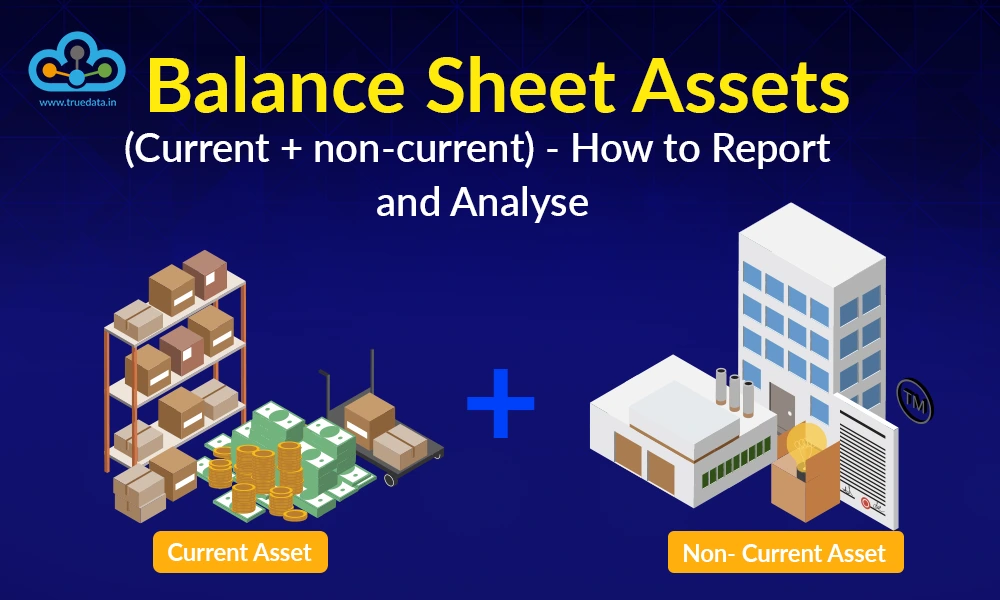
Analysing the financial statements is the first step in the fundamental analysis...